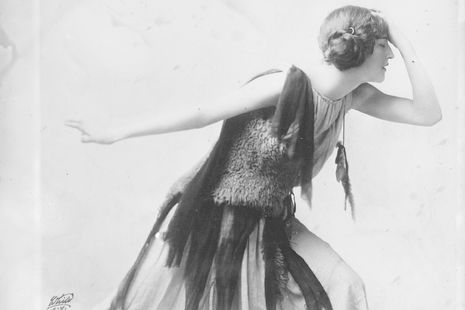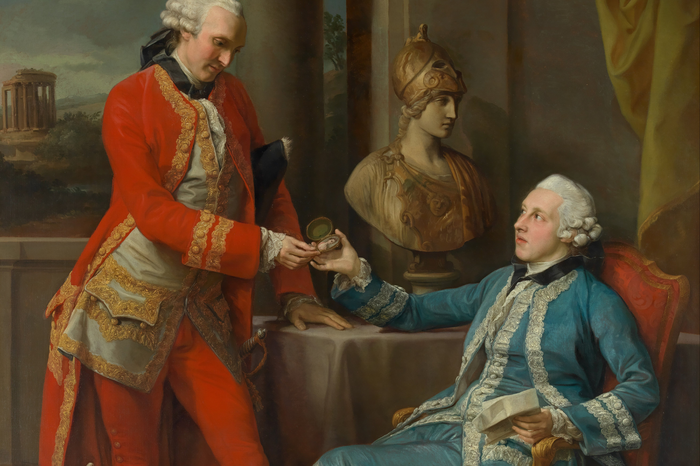The 1920s and its modern resurgence
Arshika Parann breaks down the iconic fashion of the 1920s, and explores how it pervades society today

Fashion choices have always been cyclical, but trend cycling extends beyond the revival of concepts from a couple years ago. As we are halfway through the twenties it only seems fitting that this decade has seen the resurgence of certain clothing, jewellery, and hairstyles attributable to fashion 100 years ago – the roaring 20s. The 1920s were a turning point in modern fashion and will always serve as a pivotal moment in fashion development. It has identifiably used fashion to explore the extension of female freedom and moving away from the gendered approach to garment production, arguably most notably embodied through the integral flapper dress. Through an exploration of the history of 1920s fashion, the resurgence of many of the trends attributable to the era can be easily explained and established.
LBD
Created in 1926 by Chanel, the Little Black Dress – which has long since been a clothing staple – was the first step in dismantling the notion that black was a colour only appropriate for funerals, and instead positioning it as sexy and timeless. It further derogated from the status quo on fashion with Vogue commenting on the ‘unfussiness’ of the dress in its construction and composition. Arguably the most versatile piece in a woman’s wardrobe is attributable to the 1920s and an indication of the emphasis on practicality which was missing in previous decades. The LBD encapsulates the priorities of the fashion movement in the roaring twenties to offer subtle striking glamour which was refreshingly free from the feeling of suffocation under various fabrics, materials, and embellishments.
“[The flapper dress] could still fit into the glamour of the 20s while simultaneously introducing a practical element to the fashion”
The Dropped Waist
A modern reiteration of the famous flapper dress, attributed to designers like Jean Patou and Jeanne Lanvin, can be found in the trend towards dropped waist dresses. Flapper dresses were indicative and expressive of the freedom women experienced in the new age, with the height of the dress’ popularity coinciding with the extension of suffrage to women. The lower waistline allowed for the female figure to continue to be celebrated without the sexualisation of unrealistic figures. This, coupled with the higher hemlines, made for a dress which could still fit into the glamour of the 20s while simultaneously introducing a practical element to the fashion. The flapper dress served as a gateway through which women felt emboldened to engage in novel experiences.
From this, the dropped waist dresses have become the current fashion landscape’s take on this fashion symbol. Starting off in dresses which suited for luxurious occasions, dropped waist dresses cemented a refined take on the flapper dress. Often made in silk and satin, these dresses subtly paid tribute to the widely noted glamour of the 20s whilst tailoring it to current demands. And as with any trend, the dropped waist dress movement trickled down into mainstream fashion. Through casual fabrics such as denim, the dropped waist dress began to incorporate the artful practicality which was at the forefront of the 1920s fashion movement. The two iterations of the dropped waist dress, one which is more suitable for an elegant occasion and another more suitable for daily wear, reflects the two ambitious aims of the flapper dress: beauty and practicality.
Pearls
While a symbol of wealth and poise in the 20s, pearls were reimagined in the modern day as an effective tool through which a casual outfit could be elevated with a simple yet striking addition. The most important modern input on pearls was its exploration as a tool of male fashion expression. Most notably, celebrities such as Harry Styles have experimented with the accessorisation of an outfit through a simple pearl necklace, and has served as a pioneer in the movement away from gendered fashion, a concept first explored in the 1920s.
“The fashion symbols created in the decade were the first instance within which traditional approaches to fashion were challenged”
However, pearls have always served as a symbol of elegance and refinement amongst women, with a simple string of pearls being sufficient to elevate an outfit. This unwavering image throughout history has been challenged by the use of pearls in modern male fashion. Like the 1920s explored moving away from creation of gendered garments, the 2020s have considered moving away from gendered accessories. This move away from tradition, although unique to this era, finds its roots in a period 100 years ago, and reiterates the revolutionary nature of the roaring 20s.
The 1920s served as a pivotal era of fashion development, with the reimagination of garment construction. It was the beginning of a more liberal approach to clothing’s composition, with utility being equally as valued as aesthetics. While it is easy to reduce the 1920s down to a mere symbol of excessive wealth and glamour, the fashion symbols created in the decade were the first instance within which traditional approaches to fashion were challenged. It created a dynamic within the fashion industry which allowed for striking changes which has been a concept carried forward today. The modern deconstruction of gendered constructs in fashion takes inspiration from the revolutionary period of the roaring 20s. The resurgence of the 1920s has been integral in demonstrating how the cyclical nature of fashion can be identified in the revival of old pieces. But most simply and crucially, it evidences how the concepts first explored in the past are now reconsidered through a modern lens.
 News / Gov declares £31m bus investment for Cambridge8 December 2025
News / Gov declares £31m bus investment for Cambridge8 December 2025 News / Pembroke to convert listed office building into accom9 December 2025
News / Pembroke to convert listed office building into accom9 December 2025 Science / Fancy doing research this summer? A guide to getting involved as a student8 December 2025
Science / Fancy doing research this summer? A guide to getting involved as a student8 December 2025 News / Write for Varsity this Lent3 December 2025
News / Write for Varsity this Lent3 December 2025 News / Uni redundancy consultation ‘falls short of legal duties’, unions say6 December 2025
News / Uni redundancy consultation ‘falls short of legal duties’, unions say6 December 2025










